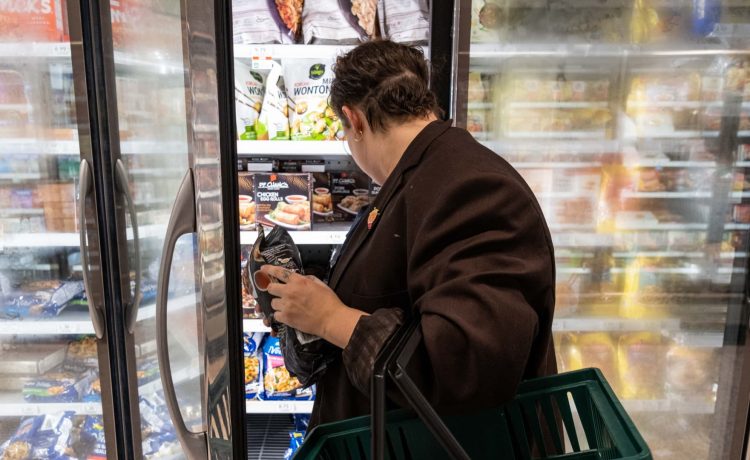People shop for goods at a Publix in Nashville, Tennessee, on December 22, 2022, ahead of winter storm Elliot.
Seth Herald | AFP | Getty Images
Consumers see the inflation burden easing while they expect to pull back considerably on their spending, according to a closely watched survey the New York Federal Reserve released Monday.
The central bank district’s monthly Survey of Consumer Expectations for December showed that the one-year inflation outlook declined to 5%, down 0.2 percentage point from the previous month and the lowest level since July 2021.
While that pace would still be well above the Fed’s goal of 2% annual inflation, it represents progress in the fight against the surging cost of living. Economists believe that expectations are a key to inflation, as they influence the behavior of companies that will raise prices and workers who will demand higher wages if they think prices are going to keep rising.
The New York Fed’s one-year expectations gauge had hit a record 6.8% in June, according to data going back to 2013, amid a surge in inflation to its highest point in more than 40 years
Over the longer term, expectations were little changed, with the three-year outlook holding at 3% and the five-year projection edging higher to 2.4%.
Consumers expect gas prices to increase 4.1% and food prices to rise 7.6% over the next year, but both figures represent 0.7 percentage point declines from the previous month.
Though they see prices continuing to rise, consumers figure to be spending less.
The one-year outlook for household spending tumbled a full percentage point to 5.9%, the lowest level since January 2022 and well below the record-high 9% hit in May 2022. At the same time, household income is expected to rise 4.6% over the next year, a series high.
The results come amid the Fed’s move to use interest rate rises to tamp down inflation. In 2022, the central bank hiked benchmark rates by 4.25 percentage points and is expected to add a few more increases in the early part of this year before pausing.
One primary target is the still-hot labor market, which saw growth of 223,000 nonfarm payroll jobs in December. Fed officials worry that a continued imbalance of labor demand for supply — 1.7 open jobs for every available worker — will continue to push wages and business costs higher.
Despite the efforts, survey respondents grew more optimistic about the labor market, with 40.8% expecting the unemployment rate to be higher a year from now, a 1.4 percentage point decline from November. Unemployment was at 3.5% in December, tied for the lowest level since late 1969.
Home prices also are expected to grow 1.3%, a 0.3 percentage point increase from November, according to the survey.







